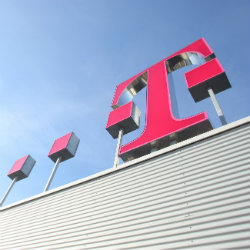DT's head of messaging explains how the carrier went from having an RCS app to an integrated service and details what's next on its RCS roadmap.

It doesn't have hundreds of millions of monthly users to brag about like some of its over-the-top (OTT) competitors, but Deutsche Telekom's rich communications service (RCS) offering is nothing to scoff at -- and it's come a long way from where it started.
Deutsche Telekom AG (NYSE: DT) has been a long-time supporter of the GSM Association (GSMA) 's RCS standard for advanced communications, deploying Joyn, the customer-facing brand, last year and joining Jibe Mobile 's Hub to interoperate with other carriers doing the same. (See DT Backs Jibe's Cross-Carrier RCS.)
But only recently was the German incumbent operator able to make RCS compelling for its customers, and it did so by no longer making it an option, but rather just part of its service. Kobus Smit, head of voice and messaging at Deutsche Telekom and chair of GSMA Network 2020 program, tells Light Reading that integrating RCS within the phone's messaging was key to getting traction for it. The Blackbird release of Joyn meant that consumers no longer had to fire up a separate app, as they would for WhatsApp or Kik, to use RCS. When Joyn was compared to either of those OTTs, it always lost. As part of SMS, however, it's a no brainer.
"That has been crucial, the missing ingredient," Smit says. "It's just there, and it just works."
DT is rolling RCS out in phases. At present, customers can send an IP-based message rather than an SMS, do group chats, MMS and add video to phone calls. DT isn't yet marketing any of these free capabilities, but Smit says it will towards the second half of the year as it's first looking to grow the addressable user base.
For more developments in the RCS sector, check out the VoLTE/rich communications content channel on Light Reading.
That will come as more carriers join the Jibe Hub, which is being demonstrated with Sprint Corp. (NYSE: S), Vodafone Group plc (NYSE: VOD) and KPN Mobile at Mobile World Congress. While DT waits for momentum here, it is also building out its feature set for RCS beyond the basics that OTTs today provide. (See Operators Joyn Forces for RCS Services.)
Smit says DT is part of an Operator Interest Group under the auspices of the GSMA that tests out new services, delivers them to OEMs and eventually launches them, without waiting on standardization. The group, which also includes Salt SA , Vodafone, Sony Corp. (NYSE: SNE) and Samsung Corp. has improved the way DT does innovation, he says. (See Vodafone Joyns Fight Against OTT Threat.)
Right now the group has three sets of use cases it plans to launch later this year -- pre-call, during and after. Pre-call is an interface that gets added to devices on the call screen to provide context for the call. A caller could, for example, select an urgent button that notifies a call recipient that the call is important, lest they choose to ignore it. Or, during a call, a user could send a map or picture and both parties would be able to add notes to it. If the call was missed, the caller could leave a text note in the recipient's call log rather than leaving a voicemail (because who does that anymore?!).
"It's all about enriching the call experience with standard RCS without needing any new features in the backend," Smit says. "That is exciting for us."
Once the Operator Interest Group commercially deploys the service, they will extend it to what's already in the RCS standard. Smit likens it to open source, agile standardization, words that haven't traditionally been associated with the GSMA's RCS push.
In 2016, Smit says DT and the GSMA will turn their attention to video calling, which he believes will "most definitely go mainstream soon." Unlike the US operators that see RCS as a bolt-on to voice-over-LTE, DT wants to use it to bridge the time until VoLTE is in a "stable environment" in Europe. That means that video will work properly on LTE and both parties will have solid coverage to maintain VoLTE calls. (See Samsung Dials Up RCS for VoLTE.)
"For video in LTE to work properly you need both A and B party inside VoLTE coverage, but with enabled handsets and staying in coverage for the whole call," he says. "That's not a convincing video experience, which is why we're combining it with RCS. That becomes a convincing video proposition. That is slightly further down the line."
— Sarah Thomas, 

 , Editorial Operations Director, Light Reading
, Editorial Operations Director, Light Reading
About the Author(s)
You May Also Like











